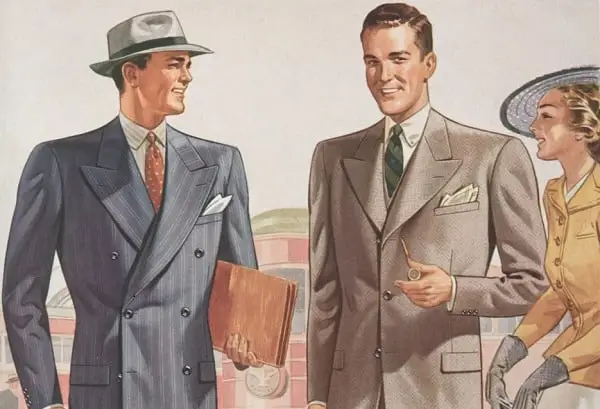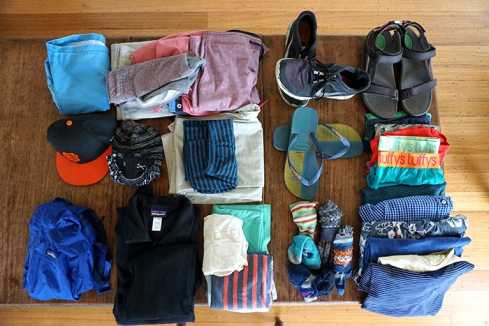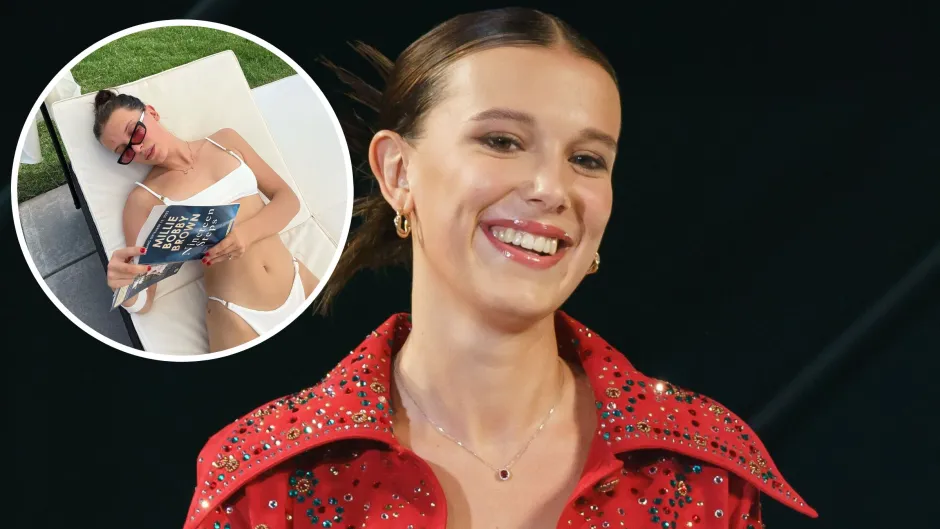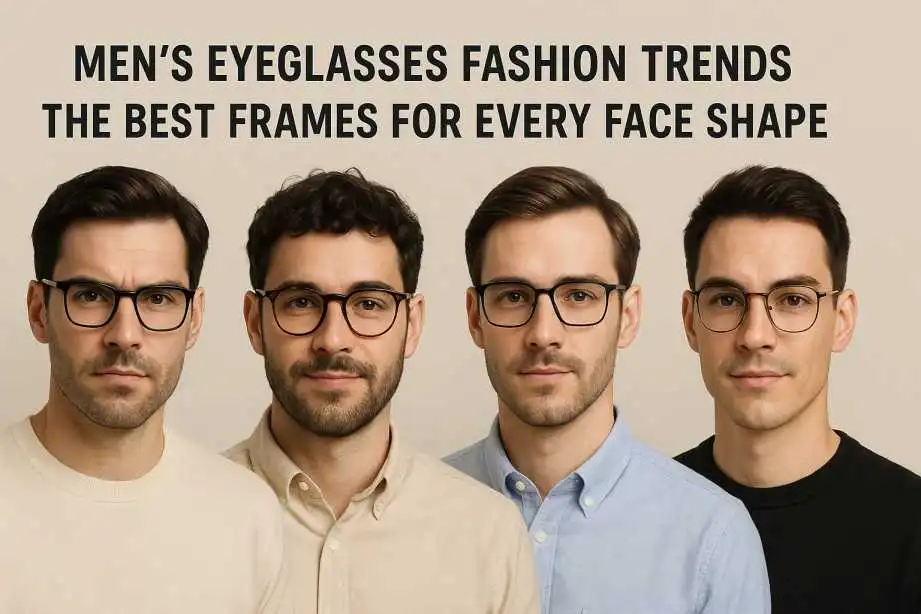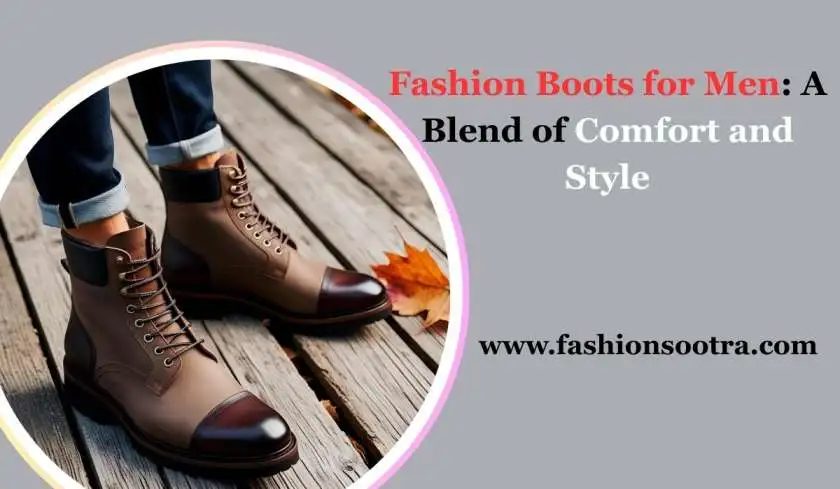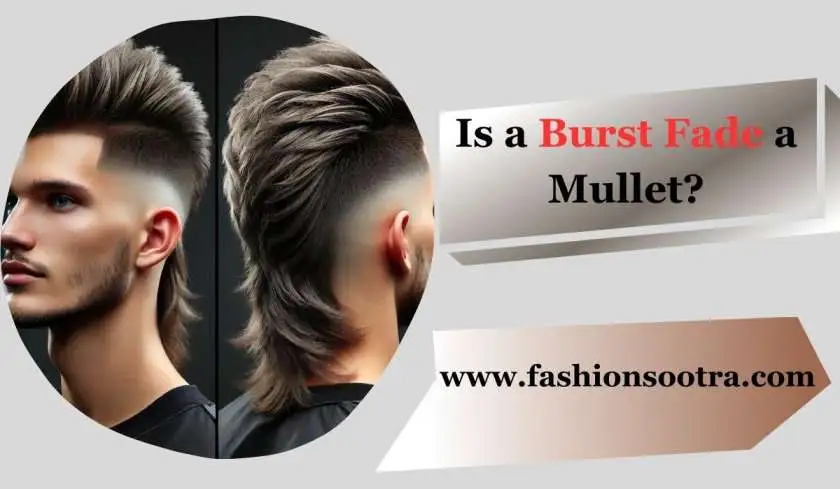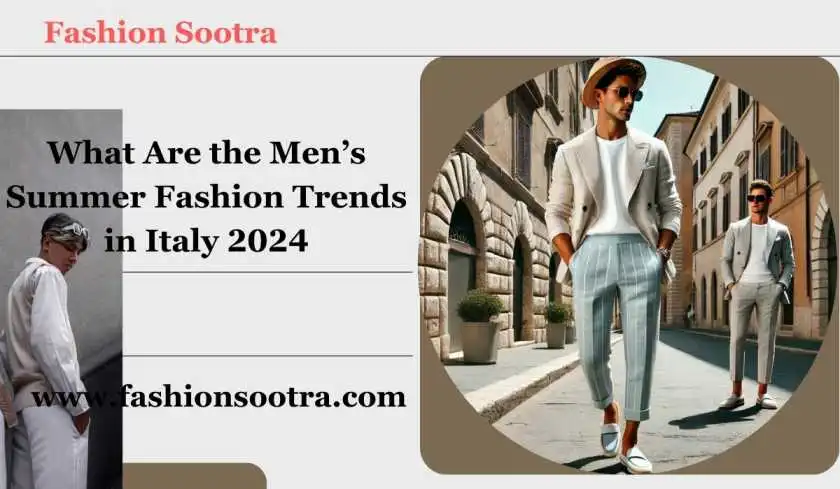Fashion reflects its times, and America was changing rapidly in the Roaring Twenties as major socioeconomic changes occurred across the country. With new freedoms and greater wealth came more money for the latest fashions that permeated the great melting pot of Mecca. The timeless styles created during this era set the first fashion dictates that still apply today.
The 1920s laid the foundation for the working class and the elite. the freedom made possible by fashion participated in it. The streamlined style became a popular trend among men, and many manufacturers turned to softer materials and looser cuts.
Smart formal wear was once again perfectly working and perfect. Fitted jackets, three-piece suits, and trousers with pleats and hems ensured a strong silhouette for men of the time.
Casual clothing became even more relaxed. Debut in sports fashion with sweaters, loose pants, sweaters and hats, paired with a variety of accessories to express yourself.
The 1920s also saw fashion shift from stiff, durable fabrics to more natural fibres, allowing for more movement. Clothing made of cotton, wool, linen and synthetic fibers such as viscose became the norm. New production techniques have given rise to lighter, more varied and softer textured garments, resulting in sweaters, cardigans and button-down shirts, which pair with a wide range of hats for a sophisticated silhouette.

Image Source: google.com
Seasonal fashion cycles became common in the 1920s, giving people the opportunity to change their style every few months based on current trends. In menswear, that has meant ditching khakis and neutral tones in favor of lighter suits, more colorful shirts and patterned pants as casual clothing options.
Men's formal attire also underwent a slight adjustment, as formal evening attire of the time included a tuxedo, top hat, and leather Oxford shoes.
For semi-formal occasions, men had the option of wearing tweed suits. , blue, gray stripes or use other muted colors or even herringbone patterns. Older men of the era still preferred bowler hats and Fedora hats.
While the 1920s may have been a time of style and glamour, this era was also an era of sophistication and practicality. Tapered and tight trousers were also very popular during this period and influenced men's fashion as it is defined today.
Incorporate the 1920s Into Your Modern Wardrobe
If you want to emulate the classic look of the Roaring '20s in the United States, below are guidelines considered essential elements of '20s style.
Jackets
Men's jackets worn in the 1920s were primarily inspired by dressing gowns of the time and were therefore cut to emphasize the waist and a specific silhouette. silhouette.
They were usually double-breasted and made of more resistant fabrics such as wool, and featured a two or three button placket, sometimes cut on the front, and a bathing suit. Silk lined thanks to high-quality workmanship. Even though lighter fabrics have been added to the mix, the style remains effectively modern menswear.
Tweed continued to be popular. clothing. material for country clothing, while in the warmer seasons cotton and linen fabrics dominated. Lighter fabrics appeared throughout the 1920s compared to the standards of the time.
Jackets from this period also featured deeper plackets and lapels wider. it laid the foundation for the modern business suit of modern times. For a more modern approach that doesn't ignore subtle differences, compare lapel shapes, pockets, collar heights and fabrics.

Image Source: google.com
Shirts
Through much of the 1920s, shirts were generally solid colors or featured vertical stripes in contrast. to stand out under vests and jackets. Toward the end of the decade, pastel colors became fashionable, and younger men wore colorful cotton shirts with folded colors and plain cuffs.
However, relatively popular in the modern world. At the time, short sleeves were relatively rare, and most men continued to roll up their sleeves on hot days.
Pants
Flat, low-cut trousers were the staple item of clothing in the early 1920s and were usually made of cotton. Made of cotton or wool, fitted at the waist and with wide legs, although straight legs with cuffs are used. the norm.
By the end of the decade, tapered suit trousers had become the norm and remained an essential part of men's style. In this period, simple pleats and side straps emerged, and patterns and colors quickly became fashionable. These included black, khaki and gray plaids, tweeds and stripes. Nowadays, men have a variety of options for wearing loose or tight clothing, depending on their personal style.
Vest
The 1920s marked the beginning of a new dress code for men, as waistcoats and waistcoats were no longer necessary. Although some men of the era chose not to wear them, those who did wore styles with a deeper neckline and notched lapels or no lapels.
Cropped waistcoats featuring front pockets and straight cut were the trend of the day. Men of lower socioeconomic status during this era paired a nice tweed or knitted vest in solid colors like black, blue, or gray with matching trousers.
Suggested Post: Men's Overalls Fashion: A Guide to the Latest Trends 2024
Adding a vest was considered then (as today) a sophisticated casual look that offered greater versatility to the men's wardrobe.
Outerwear
Outerwear in the 1920s was heavier and more fitted than traditional modern clothing and was available mainly in darker colors. soft colors. Initially, brown and black were the main colors of suits, but they were soon replaced by a more flattering tone for all men: navy blue.
I Coats tended to reach below the knees and featured broad shoulders and wide silk-lined lapels reserved for the more luxurious versions.
Hats
If a sector of men's fashion has experienced a true renaissance, it is thanks to the hats worn in all social classes. men everywhere. Types of routes. While the upper class preferred top hats, middle class men of the time preferred felt hats and fedoras. During this period, the men's wardrobe consisted of hats designed for formal and informal occasions.
Bowler hats and felt hats for formal occasions Newsboy caps and tweeds for the sport. During events, men could choose between different colors and prints to highlight their clothes.
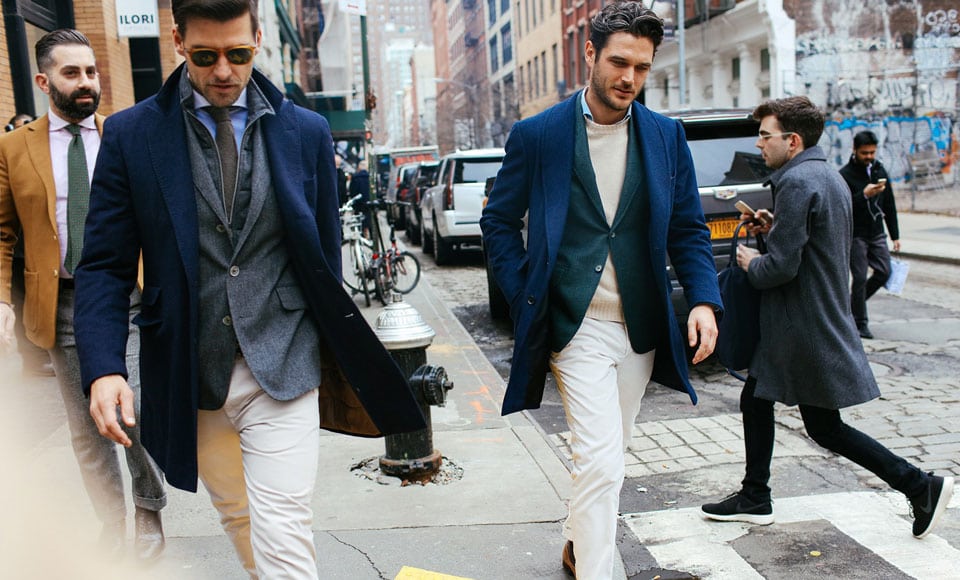
Image Source: google.com
To make them stand out even more, the most elegant headdresses were decorated. with ribbons or feathers. a touch of refinement and class to an outfit. Nowadays, men have an even wider choice of headgear.
Pockets
Silk or linen pocket squares were designed to enhance a male suit and add a touch of color . to the look and a touch of class. A must for elegant men's fashion. Carefully folded pocket squares are designed to match the color of your tie, hat band or shirt.
Watches
Today's premium brands began their triumph in the watch industry in the 1920s, when soldiers popularized the accessory due to its functionality. Luxury watches aimed at the elite were quickly in demand, and Rolex and similar luxury retailers expanded their traditional line by producing the first precious metal wristwatches.
In Meanwhile, cheaper watches were also developed for the common man and became an integral part of traditional culture.
Glasses
In the 1920s, glasses were considered a unique fashion accessory, and round horn-rimmed glasses placed on the bridge of the nose were very popular.
Eyeglass brands diversified their collections at this time to feature oval and octagonal glasses, as well as sportier versions with thicker frames and muted or tortoiseshell colors.
Ties
The accessory that underwent the most dramatic change in men's fashion were the previously heavy, poorly made and very creased ties, which canceled out man's efforts to appear elegant. Ties became an important accessory in the 1920s, and more options became available for men, including plaids, horizontal stripes, and solid colors in various shades.
I Bow ties were also added to allow for greater freedom of expression, and most ties of this period were made of silk or wool fabric. At that time, viscose or silk scarves with Windsor knots were worn under sweaters. Many men also wore collar pins and clips to change their appearance.
The Right to Men’s Shoes in the 1920s
Men's shoes underwent a radical change in the 1920s, when Oxford shoes became a trend. In the United States, it has taken precedence over other styles, including tassel loafers, pointed-toe shoes, patent leather shoes, work boots, casual shoes, and winter boots.
At the time, most shoes were made entirely of leather or a canvas blend. While black, brown and white tones predominated, the 1920s also brought a touch of style by offering two-tone colors and wingtips offered an alternative to traditional leather shoes.
Men’s Formal Attire in the 1920s
Men's fashion, affectionately known as "The Roaring Twenties," began a movement of transformation towards a less conservative and less formal style, which was directly influenced by several factors, mainly by the World War, by jazz and by the melting pot that was beginning to emerge in the United States.
It was a time when most men, regardless of social class, wore suits during the day and late at night, with more marked variations on some occasions.
Formal Occasions A black or navy suit or tuxedo was required for men in the 1920s. Tuxedo tailcoats of the era featured a back train and three-piece formal suits designed for comfort and ease of movement.
Tuxedos or suits they were often paired with a matching dress. The suit came with a top hat, with white ties worn on formal occasions and black ties becoming increasingly popular.
Casual Clothing for Men in the 1920s
In this period, unbuttoned shirts began to become fashionable with brighter colors and stripes. , with younger men opting for softer collars or no collar, as seen in Henley shirts.
The 1920s also marked the beginning of The jazz era marked the first time men could loosen their dress code and elevate their fashion by combining tailored pieces to complement their personal sense of style.
This meant that more and more men were wearing high-waisted pleated trousers in a rich variety of colors, from dark purple and red to dark green. For the more adventurous men of the era, corduroy and flannel fabrics were popular alternatives.
The Butterfly Effect of 1920s Style on Fashion Today’s Men’s
Men's fashion of the 1920s had a significant influence on the development of contemporary styles and continues to influence current fashion trends in many ways Also today. The emphasis on comfort and casual clothing served as the basis for the creation of modern casual fashion during this era, reflected in the popularity of polo shirts, chinos, and loafers.

Image Source: google.com
The relaxed silhouette introduced in the 1920s radically changed menswear and had a major influence on modern clothing, albeit with the added caveat that form-fitting and exaggerated options represent contemporary variations for those wanting a wider range of styles for your wardrobe.
Additionally, the 1920s saw a shift towards more casual clothing with the introduction of sports and casual clothing. They included sweaters, baggy pants, jumpers, hats and a wide range of accessories that allowed people to express themselves through their clothing. The 1920s also saw the creation of numerous accessories that are still popular today. Without a doubt, 1920s fashion helped allow modern men to confidently venture into all directions of men's style.
And that's it! We hope you enjoyed this history lesson on men's style of the time and found the information useful!
1920s Mens Fashion
Like women, young men of the 1920s abandoned the restrictive clothing of their parents' generation and in return received comfort and clothes that would help them party like Jay Gatsby.
With a few simple accessories you can create the perfect 1920s outfit! Ties, bow ties, vests, hats, boats, suspenders, glasses, canes, choose one or two or go crazy and choose them all.

